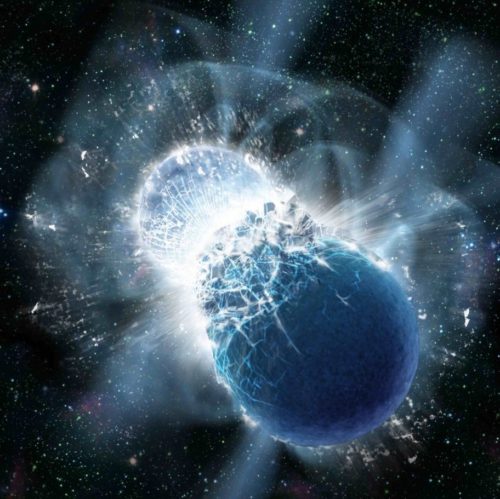Artist’s impression of colliding neutron stars. Image credit: Dana Berry, skyworksdigital.com.
The first detection of a binary neutron star merger with gravitational waves, GW170817, heralded the beginning of multimessenger astronomy. One of the most exciting prospects in new this era is the measurement of the equation of state of dense nuclear matter. Neutron-star cores contain the highest density matter in the observable universe (i.e., not in a black hole). The physics governing matter at these densities is described by Quantum Chromodynamics (QCD). However, solutions to QCD at the high densities and relatively low temperatures found inside neutron stars are elusive, as numerical approaches are computationally intractable in this domain. Neutron stars therefore offer valuable insight into the fundamental physics that govern matter at the subatomic level.
The subatomic physics of a neutron star are manifested in the star’s macroscopic properties, such as the relation between the star’s mass, radius, and the amount the star deforms when exposed to a tidal field — the star’s equation of state. These properties affect the gravitational wave that is emitted when two neutron stars orbit each other and merge. They also affect the nature of the electromagnetic (EM) counterpart that is emitted after the merger. By combining gravitational wave and EM observations of neutron stars, we can learn about the physics of dense matter. We may even discover new phases of matter!
